Louisiana State Penitentiary – the Angola Prison (History and "Slavery by Another Name")
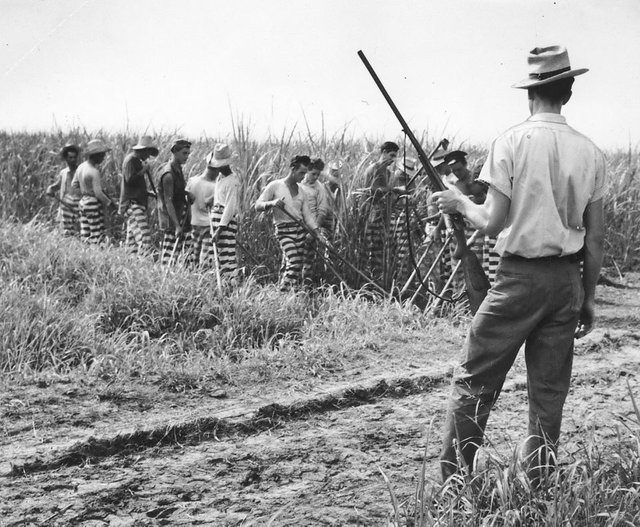
(1930)
Louisiana State Penitentiary is located in the state of Louisiana, in the southeastern region of the United States and it is bordered by Mississippi river on three sides. It is the largest maximum-security prison farm in the U.S.
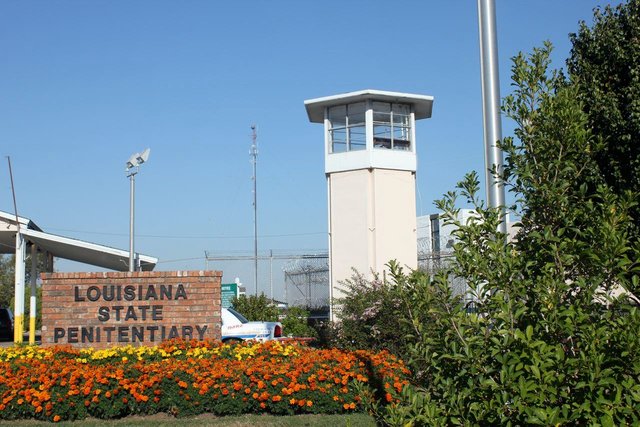
Since Louisiana has the highest incarceration rate of adult prisoners in the U.S. by 2008, Louisiana State Penitentiary had grown to 18,000 acre complex—larger than the size of Manhattan and its population is approximately 8000 - 6300 being the prisoners mostly serving life sentences.
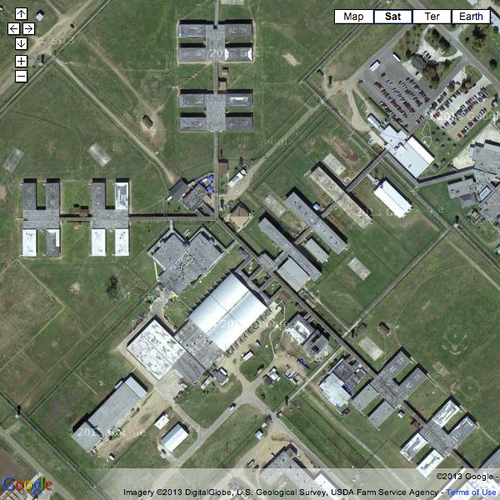
It is not a “regular” prison, it is a prison farm. Prison farm is based on the similar form of the historical penal colonies where criminals and other “unwanted” people were sent to remote locations their sentence being the hard labor; therefore the distinction between a “regular” prison and a prison farm is that at the prison farm convicted criminals are forced to produce the agricultural goods for the government and to feed themselves; it was also used for personal gain of those in charge.
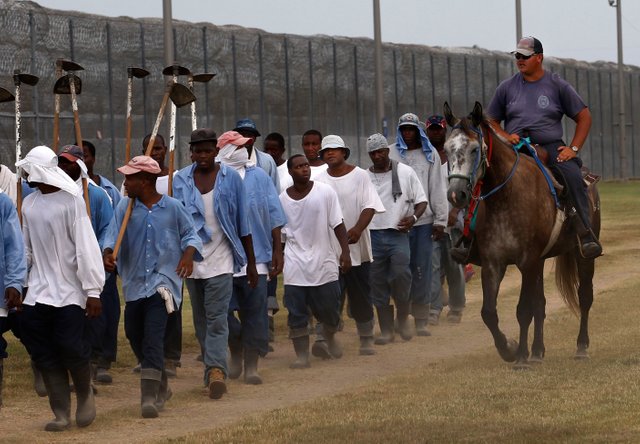
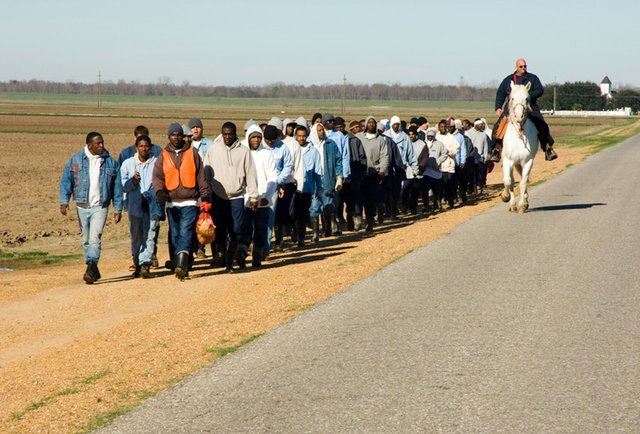
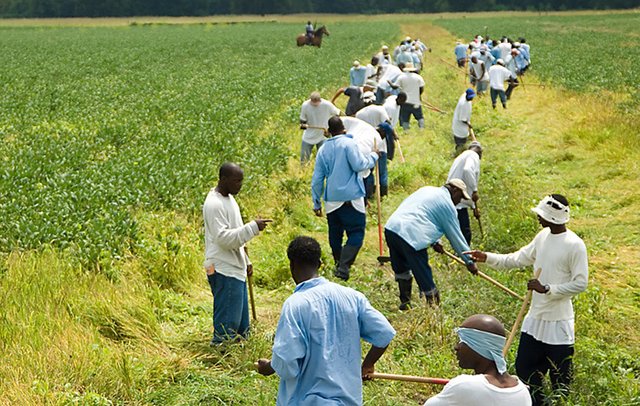
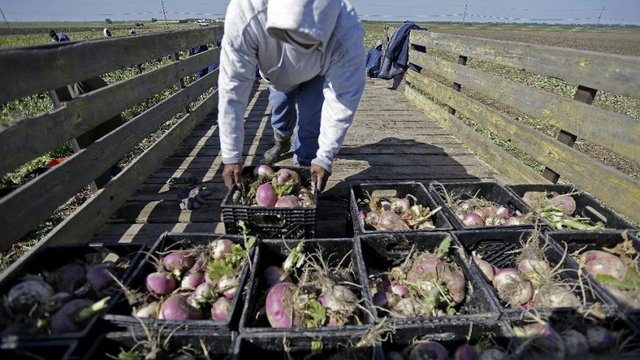
It is called the "Alcatraz of the South" and simply "The Farm", but the nickname Angola is the most distinguished one and there is a good reason for that.
The Louisiana State Penitentiary is nicknamed the Angola prison because the territory which the prison occupies was a slave plantation in the 19th century and most of the slaves were brought to the U.S. from Angola, the country in southern Africa. (This information is not to be taken for granted because there are some indications that Isaac Franklin, an American slave trader and planter, the co-founder of the largest slave trading firm in the United States and the owner of the plantation at the time, named it himself Angola (or Angora) in 1835.) However, the first explanation of the nickname’s origin is the most common one and usually being used as a fact.
In 1865 slavery was abolished, but one must pay close attention to the Section 1 of the 13th Amendment to the United States Constitution which reads: Neither slavery nor involuntary servitude, except as a punishment for crime whereof the party shall have been duly convicted, shall exist within the United States, or any place subject to their jurisdiction. This indicates that certain form of slavery was still possible as “a punishment for a crime”.
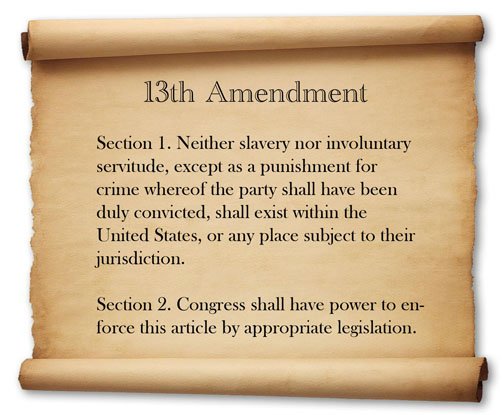
In the South, in 1865 and 1866 this “opportunity” was misused by authorizing laws known as Black codes which enabled Southern authorities to restrict African Americans’ freedom and make them work as cheap labor. But, what directly influenced the creation and history of the Angola prison was the Convict leasing system.
Convict leasing system was in use in the South in a form of penal labor and it made possible for the government to “rent” convicts to private firms as free labor. It wasn’t free in its essence. Free was the work the inmates did since they weren’t paid, but the private parties would pay the government for using the work of convicts and they were also supposed to be responsible for the convicts’ personal needs such as accommodation, food, health, safety etc. That was a system which was profitable for both parties, but the convicts (which can be understood under some circumstances, but there were orphaned children included, too).
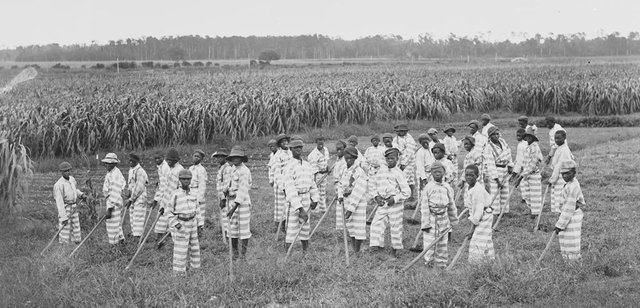
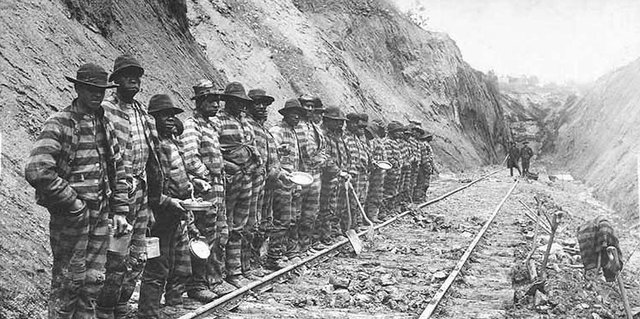
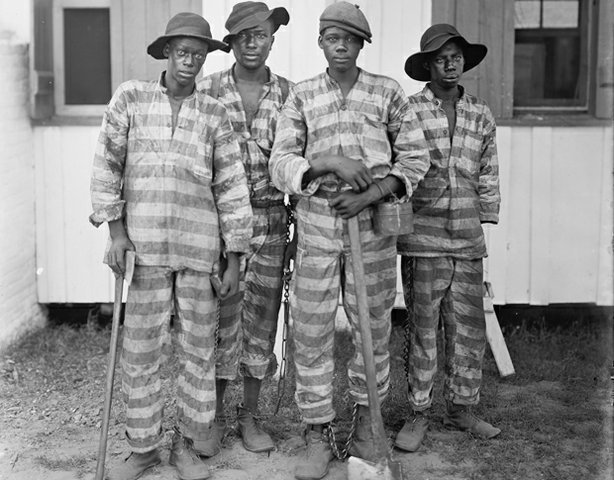
But it wasn’t that way when it comes to practice. The problem was that the state gave total control to the private parties over the convicts and the majority of the convicts were African American.
The writer Douglas A. Blackmon described the system:
“Farmers and businessmen needed to find replacements for the labor force once their slaves had been freed. Some southern legislatures passed Black Codes to restrict free movement of blacks and force them into employment with whites. If convicted of vagrancy, blacks could be imprisoned, and they also received sentences for a variety of petty offenses. States began to lease convict labor to the plantations and other facilities seeking labor, as the freedmen were trying to withdraw and work for themselves. This provided the states with a new source of revenue during years when they were financially strapped, and lessees profited by the use of forced labor at below market rates.”
https://video.wkar.org/video/slavery-another-name-what-it-meant-be-convict/
It is evident that the law was selective when it comes to sentencing because the majority of the convicts that were “for rent” were African American. For example, a black man would be sent to prison for not carrying proof of employment which is trivial. It clearly indicates that discrimination was present and that was slavery but just named differently. (“Slavery by another name”)
It was inhumane.
In 1880 a former Confederate major bought the Angola plantation and used black convicts leased from the state as his workers. They worked hard on the plantation living in the old slaves’ quarters, in harsh conditions, often deadly, whipping was used for punishment. They were underfed, sleeping without blankets or linens, fearful for their lives, enduring constant abuse which made the state of Louisiana, following newspaper accounts of brutality, take control of Angola in 1901.

(1900-1910)
The Convict leasing system was abandoned early in the 20th century, but the series of unfortunate events and improper administration continued throughout the Angola prison’s history until today. It is very interesting that the historical name for the guards was the “Freemen”, that they were white and that the most of the convicts were African American.
Since, as it has been already told, the prison is bounded by the Mississippi river on three sides, there were floods that destroyed the crops on several occasions (in 1902, 1912, 1922) which made damage to the already hard life of prisoners and financial resources for the prison functionality.
In the 1930s prisoners worked from dawn until dusk and Charles Wolfe and Kip Lornell, authors of The Life and Legend of Leadbelly, said that Angola was "probably as close to slavery as any person could come in 1930." The difference between “original” slavery and this was that the prisoners had the chance of education and there were some number of them literate.
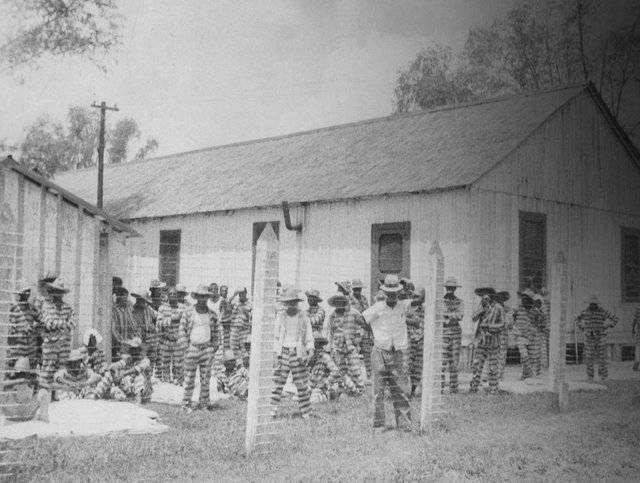
(1934)
In the 1940s the prison got one nurse, no permanent doctor and the prison hospital, while there were numerous convicts living in harsh conditions, hard labor and immense brutality. The situation escalated in 1951 when 31 prisoners sliced their Achilles tendons with razor blades in order not to be sent to work and to publicize what is happening in the prison.
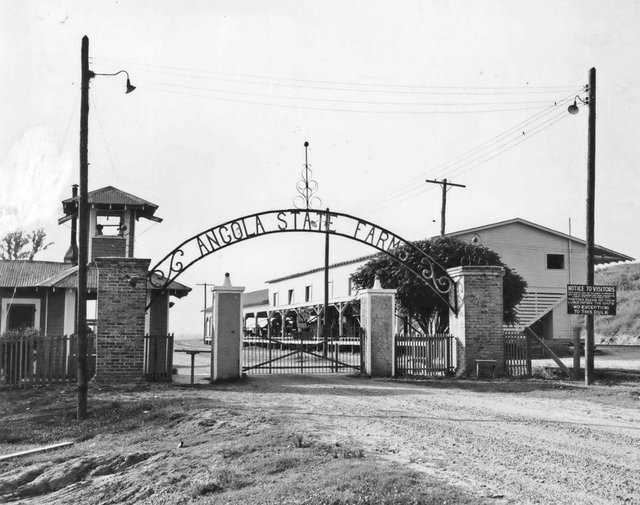
(1941)
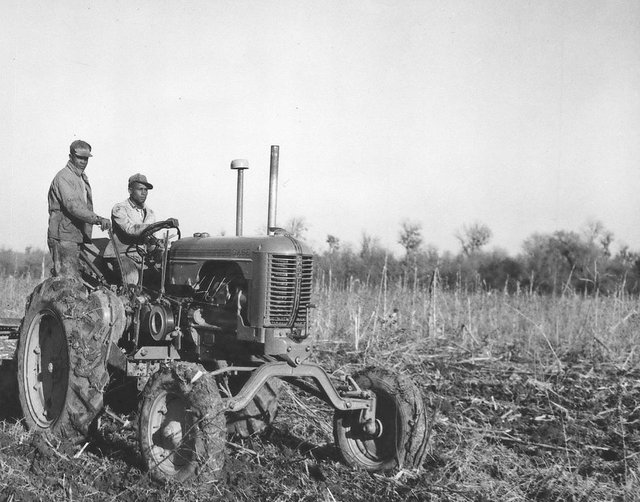
(1942)

(1950)
During the 1960s, the prison was known as “the bloodiest prison in the South” because of the high rate of inmate assaults.
In 1972 Albert Woodfox, Robert King and Herman Wallace (known as Angola Three), African Americans, were convicted of killing a prison guard and Woodfox spent over 43 years in the solitary confinement; he is the longest time kept prisoner in a six-by-nine-foot cell in the American history. (That is a story of its own)

The prison is also known for using Gruesome Gertie (an electric chair) which was put in use in the 1940s and it is infamous for the first “unsuccessful” electrocution in the U.S. At first it wasn’t in the ownership of one particular prison in the state, but carried to where it was needed. In 1957 its permanent place became Louisiana State Penitentiary. It has not been used from 1991 and it is on display in Louisiana Prison Museum in Angola.
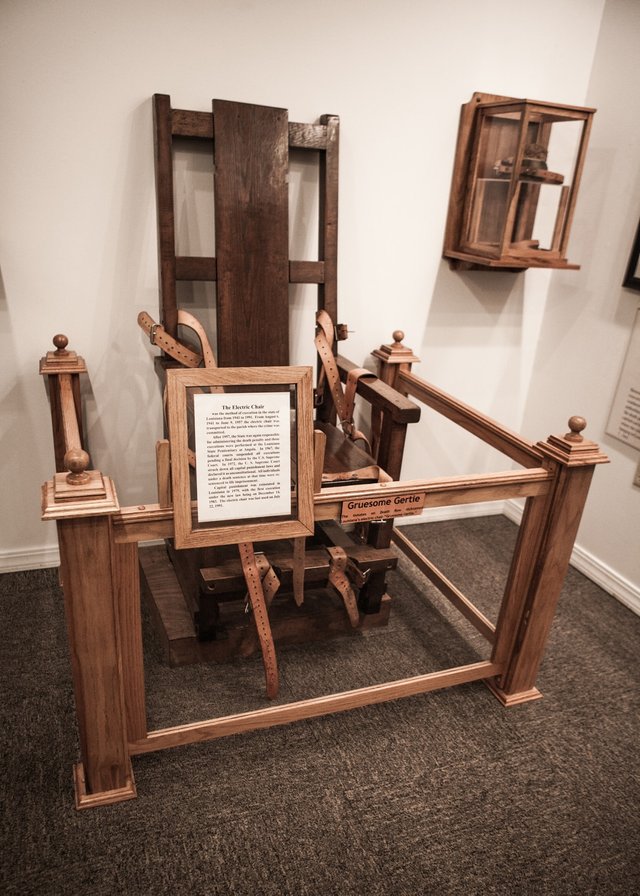
Nowadays, situation is still bad, although there were reformations which showed little improvement. The 90% of the prisoners are expected to die behind the bars because of their long sentences and nearly 80 percent of them are African American. To describe how bad it gets a good example is that if someone rejects work can be punished by the stay in the solitary confinement. There are many complaints about medical service among other important things, although the prisoners are the only group of citizens in the U.S. with a constitutional right of having medical care.
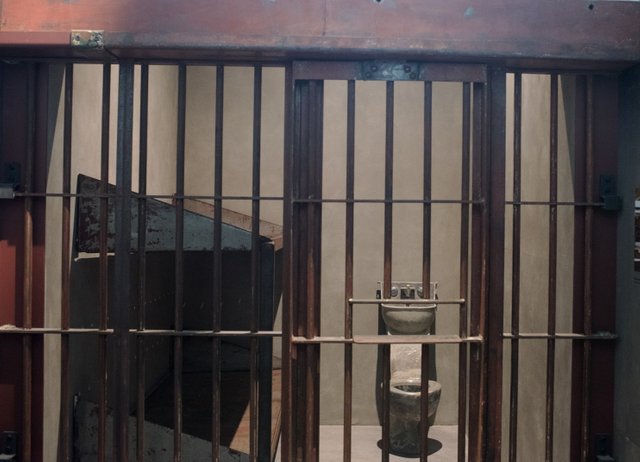
(A prison cell from inside the Louisiana State Penitentiary on exhibit at the National Museum of African American History and Culture. The prison cell is 6 feet by 9 feet. )
The prison is still self-supporting, there is cultivation of corn, cotton, onions and other vegetables and there is cattle which is sold for beef.
While inmates work, they are supervised by the correction officers on the horses.

It is interesting to mention that this prison has its Rodeo where inmates who behave well can participate, newspaper, radio-station, museum which is open to public and a magazine made by the prisoners.
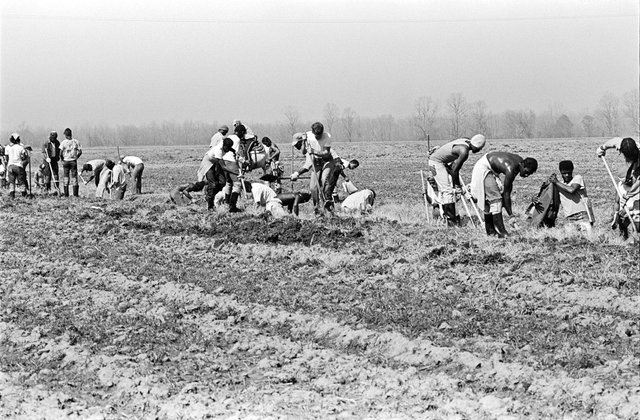
(1980)
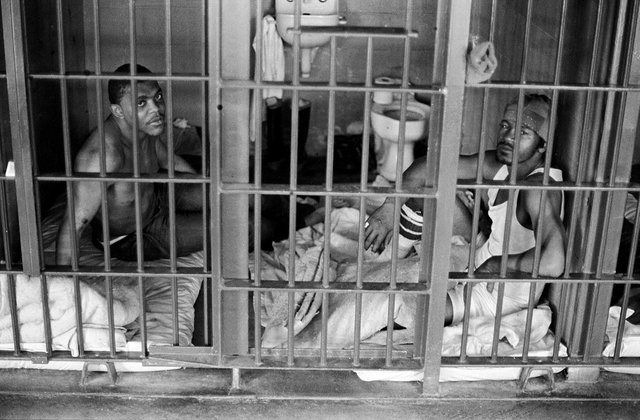
(1980)
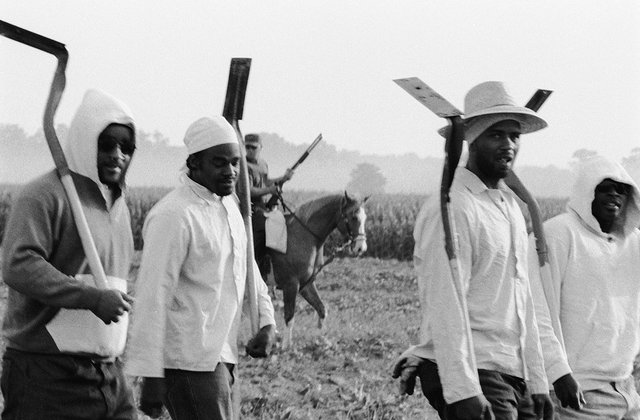
(2004)
But, what Eugene Tannehill, inmate of the Louisiana State Penitentiary in Angola points out is quite the impression someone gets after reading about it:
“There are three things Angola will do to a man. Number one: it will bring you to the crossroads of a turning point. Number two: it will harden you. Number three: it will kill you.”
There are many books, articles and movies connected to this prison. One of them is “The Dead Man Walking” starring Susan Sarandon and Sean Penn.
Images
1, 2, 3, 4, 5, 6, 7, 8, 9, 10, 11, 12, 13, 14, 15, 16, 17, 18, 19, 20, 21, 22, 23